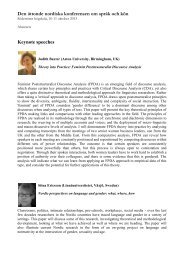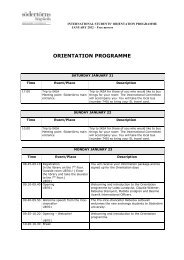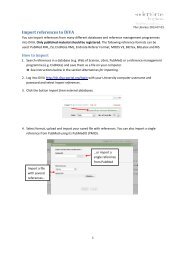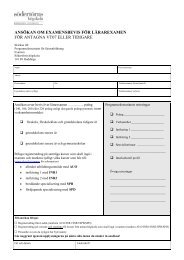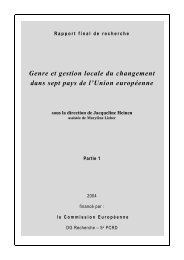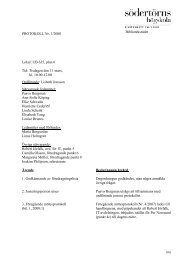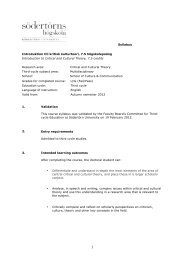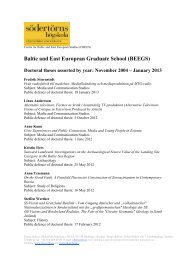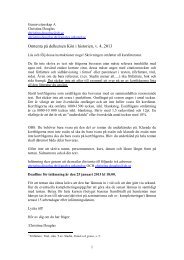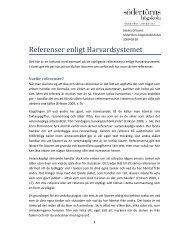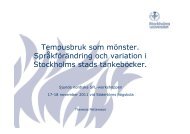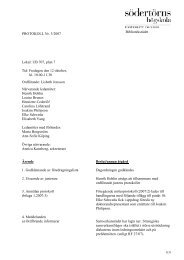Translations of 'ergative' verbs
Translations of 'ergative' verbs
Translations of 'ergative' verbs
You also want an ePaper? Increase the reach of your titles
YUMPU automatically turns print PDFs into web optimized ePapers that Google loves.
svensk/Norsk<br />
Grammatikalisering etter Kemmer, 1993<br />
Norwegian<br />
Reflexive Proto Scandinavian * Sik<br />
(1) Sik (reflexive) (2) sk (middle)<br />
Developments in Old Norse<br />
Sk- phonological reduction (erosion)<br />
Sk – case distinctions lost (attrition)<br />
Sk- agglutinated onto the verb stem<br />
(coalescence or boundry loss)<br />
Developments in ’recent’ Norwegian<br />
Deponens - s- fossilized with some<br />
<strong>verbs</strong> (not productive) (e.g sees,<br />
minnes, OBS: mailes)<br />
s- passive becoming associated (and is<br />
productive) as habitual marker<br />
(otherwise /-passive)<br />
Seg – formerly a reflexive only but the<br />
marker has spread into areas <strong>of</strong><br />
the middle<br />
Swedish<br />
Reflexive Proto Scandinavian * Sik<br />
(1) Sik (reflexive) (2) sk (middle)<br />
Developments in Old Norse<br />
Sk- phonological reduction (erosion)<br />
Sk – case distinctions lost (attrition)<br />
Sk- agglutinated onto the verb stem (coalescence<br />
or boundry loss)<br />
Developments in ’recent’ Swedish<br />
Deponens – s still productive (cf. Lyngfelt 2007)<br />
s- passive unmarked passive (i.e. not restricted<br />
to habitual situation )<br />
Sig – formerly a reflexive only marker but has<br />
spread into areas <strong>of</strong> the middle, but is in<br />
sharper competition with deponens – s<br />
and used in more restricted contexts than in<br />
Norwegian (no potential Human Agent,<br />
Negative semantic prosody – Control)



